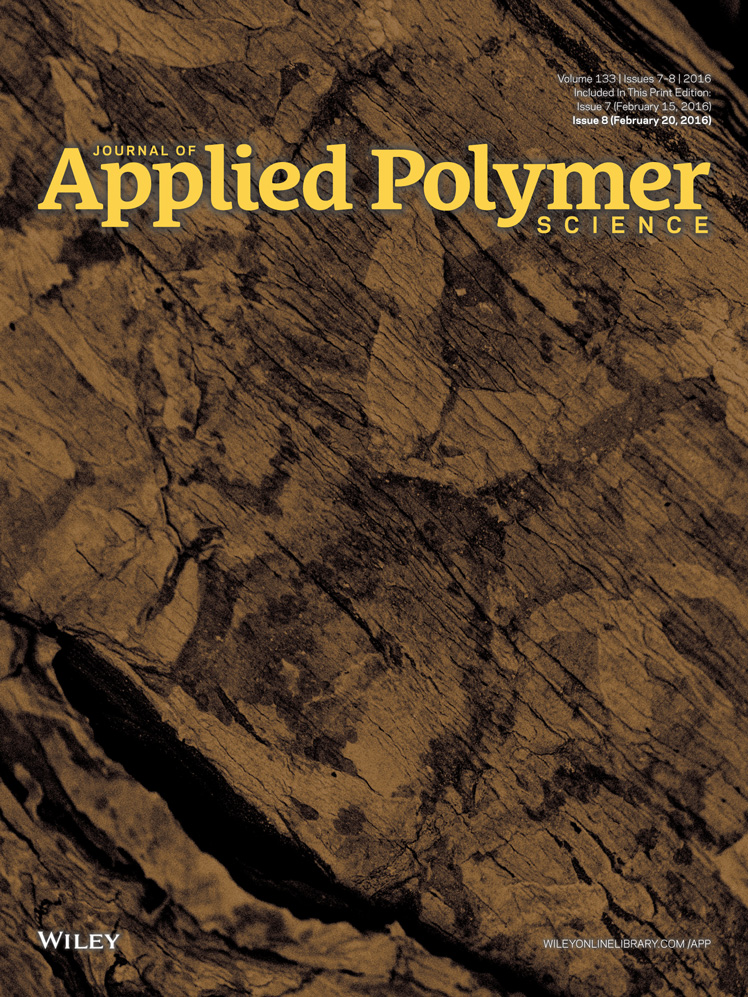Renewable thermoplastic multiphase systems from dimer fatty acids, with mineral microfillers
ABSTRACT
Renewable thermoplastic blends based on polyurethane (TPU) and polyamide (DAPA) obtained from dimers of fatty acids were reinforced with mineral microfillers, surface coated calcium carbonate (CaCO3) or high aspect ratio talc (HAR), to prepare different micro-biocomposites systems. The influence of the nature of the filler, the aspect ratio and the filler content (5, 10, and 15 wt %), for different TPU/DAPA ratios (20/80, 50/50, and 80/20 wt %/wt %), were specifically investigated. Differential scanning calorimetry (DSC) and thermogravimetric analyses were conducted to investigate the thermal properties. DSC analyses showed that the addition of CaCO3 had no influence on the glass transition and the melting temperature of the corresponding composites. Moreover, the morphology and the mechanical properties in the solid state of the different multiphase systems were investigated. SEM observations after tensile tests showed that the best matrix/filler interactions were obtained in the case of the 20/80-based systems. Uniaxial tensile tests have shown that the addition of HAR or CaCO3 fillers led to a clear increase of the Young modulus. Micromechanical models based on a two-phase composite approach, including Mori–Tanaka and Davies models were used to describe the dependence of the elastic modulus on the volume fraction of HAR or CaCO3 fillers. © 2015 Wiley Periodicals, Inc. J. Appl. Polym. Sci. 2016, 133, 43055.




